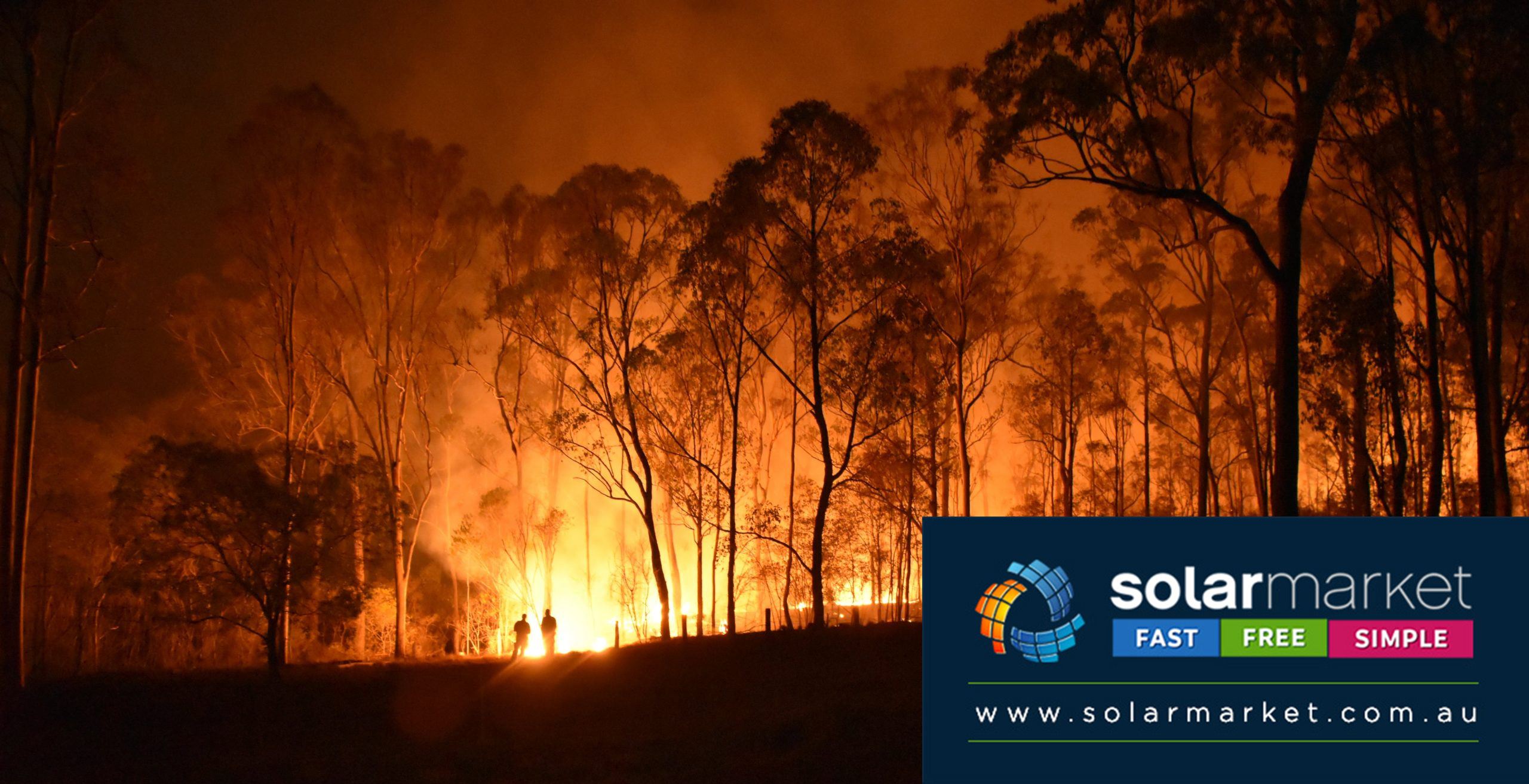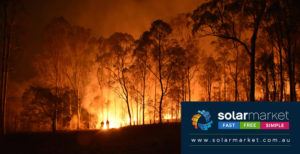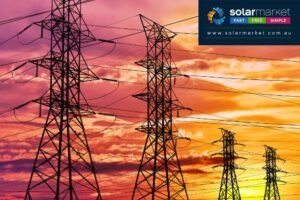2020 has brought some of the worst natural disasters Australia has seen. With intense fires, a global pandemic and intermittent flooding, it feels like we are just short of a locust plague and rain of toad. So, with imminent danger at the forefront of our minds, what should you do if you have a solar system and you are faced with a fire, flood or cyclone emergency?
Solar systems can become dangerous after exposure to fire, flood and cyclone conditions. Exposed wires, cracked panels and damaged batteries can lead to spot fires and lethal live elements. If not appropriately switched off, your solar system may still produce high voltage even though it may be disconnected from the network supply.
So how can you manage your solar effectively in an emergency?
The Clean Energy Council has produced a step-by-step guide to emergencies and solar. Read on for an overview of the plan and a few helpful hints from Solar Market.
Planning Ahead
To increase the chances of your solar system surviving a natural disaster, planning ahead is essential.
That being said, if you need to evacuate, then leave your house immediately. If you do not have time to sort your solar before leaving your property, then action ‘post-emergency management’ strategies (these are covered in the next section).
If you have adequate warning that a natural emergency is occurring in your area, there are some precautionary actions that you can take to protect your solar system in an emergency.
Grid-Connected Systems
Grid-connected systems have a ‘shutdown procedure’ already build in. To activate this procedure, you should follow the instructions marked on your inverter box. The shutdown procedure generally is as follows:
- Switch off the solar supply and mains switch.

- Switch off the normal mains switch.
- Switch off the PV array isolator.
Stand-Alone Systems
It is important to follow these steps when shutting down a stand-alone system.
- Switch the solar array off.
- Switch the inverter off.
- Dependent on your stand-alone system, follow the battery shutdown procedure to isolate the battery bank.
- Disable the generator so that the auto start function cannot kick in.
Solar and Post-Emergency Management
Upon returning to your house it is important that you do not attempt to turn your solar system back on (or off). Touching or operating your solar systems switches could result in a high voltage electric shock. So what should you do when returning home to your solar system post-emergency?
- The first thing you should do when returning to your property is to contact an accredited installer to evaluate the safety of your system.
- Ensure that any repairs to the system or area around the modules are done after your system has been signed off as electrically safe by your accredited installer.
- Once your system has been given the green light, follow the start-up procedure to start receiving your solar benefits again.
To find a Solar Market accredited installer take our solar quotes quiz.











